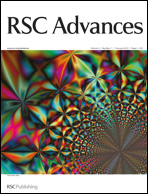*
Corresponding authors
a
Department of Chemical Systematic Engineering, Catholic University of Daegu, 13-13, Hayang, Gyungbuk 712-702, South Korea
b
Laboratory for Photonics and Interfaces, Station 6, Institute of Chemical Sciences and Engineering, School of Basic Science, Swiss Federal Institue of Technology, CH-1015, Lausanne, Switzerland
E-mail:
mdkhaja.nazeeruddin@epfl.ch
Fax: +41-21-693-4311
Tel: +41-21-693-6124
c
Istituto CNR di Scienze e Tecnologie Molecalari (ISTM-CNR) and Dipartimento di Chimica, Università di Perugia, Via Elce di Sotto 8, I-06123, Perugia, Italy
d
Interdisciplinary School of Green Energy/Low-Dimensional Carbon Materials Center, Ulsan National Institute of Science and Technology (UNIST), 100, Banyeon, Ulsan, 689-798, South Korea
E-mail:
jbbaek@unist.ac.kr
Fax: +82-52-217-2019
Tel: +82-52-217-2510
e
Department of Macromolecular Science and Engineering, Case Western Reserve University, Cleveland, Ohio 44106, USA
f
Department of Chemistry, Chonbuk National University, Jeonju, 561-756, South Korea
E-mail:
solarlee@jbnu.ac.kr
Fax: +82-63-270-3408
Tel: +82-63-270-3353


 Please wait while we load your content...
Please wait while we load your content...